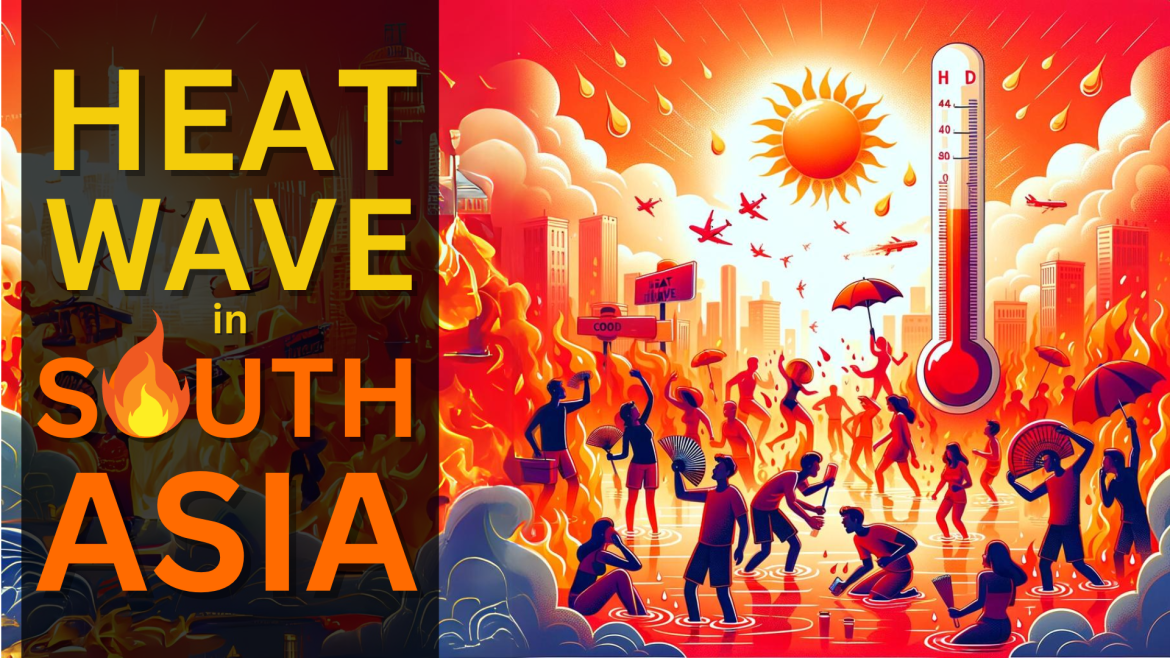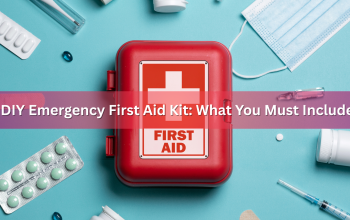In recent weeks, South Asia has been grappling with an unprecedented heat wave, with temperatures soaring to record highs in both Pakistan and India. This extreme weather event has had severe impacts on daily life, health, and infrastructure, making it crucial to understand how to cope and survive during such harsh conditions.
In this post, we will discuss the causes of this heat wave, its effects, and practical survival tips to help you stay safe and healthy.
The Heat Wave: An Overview
The heat wave in South Asia has brought temperatures exceeding 45°C (113°F) in many cities of India, Pakistan and Banglades with some areas experiencing even higher temperatures. Pakistan’s Sindh province and India’s Rajasthan have been particularly hard-hit, with heat indexes reaching dangerous levels resulting in a few deaths due to heat stroke. The combination of high humidity and scorching temperatures has led to a critical situation, putting millions at risk of heat-related illnesses.
Forecast for next week
The heat wave continues to affect large parts of South Asia, with particularly high temperatures in both Pakistan and India. The maps indicate sustained high temperatures across the region this whole weak, with inland areas experiencing extreme heat.
Pakistan
- Sindh and Balochistan: Temperatures are expected to remain very high, with several regions showing temperatures above 45°C. The cities of Karachi, Hyderabad, and Sukkur are going to experience severe heat.
- Punjab: Lahore and surrounding areas also show temperatures ranging from 42°C to 45°C.
- North: The northern areas are slightly cooler but still experiencing significant heat, with temperatures around 35°C to 40°C.
India
- Northwest India: Rajasthan, Gujarat, and parts of Maharashtra are seeing extremely high temperatures, often exceeding 45°C. Cities like Jaipur, Jodhpur, and Ahmedabad are particularly affected.
- Central India: Madhya Pradesh and Chhattisgarh are experiencing temperatures between 40°C and 45°C.
- South India: Karnataka, Andhra Pradesh, and Tamil Nadu are also quite hot, though temperatures are slightly lower, ranging from 30°C to 40°C.
Causes of the Heat Wave
- Climate Change: One of the primary factors contributing to the intensity and frequency of heat waves is climate change. The rising global temperatures have led to more extreme weather patterns, including prolonged heat spells.
- Urbanization: Rapid urbanization has resulted in the creation of heat islands, where concrete and asphalt absorb and retain heat, making cities significantly warmer than rural areas.
- El Niño Effect: The El Niño phenomenon, characterized by the warming of the Pacific Ocean, has been linked to extreme weather events worldwide, including heat waves in South Asia.
Impacts of the Heat Wave
- Health Risks: Heat strokes, dehydration, and other heat-related illnesses have surged, overwhelming healthcare systems. Vulnerable populations, such as the elderly, children, and those with pre-existing health conditions, are particularly at risk.
- Water Shortages: The extreme heat has led to increased water consumption, straining already scarce water resources. Many areas are experiencing water shortages, exacerbating the crisis.
- Power Outages: The high demand for electricity to power air conditioners and fans has led to frequent power outages, leaving many without a means to cool down.
- Agricultural Damage: Crops have withered under the intense heat, threatening food security in the region.
Survival Tips for Extreme Heat
Heat waves can be extremely dangerous and it’s crucial to take appropriate measures to protect yourself and others. Here are some comprehensive tips to help you survive during extreme heat conditions:
Stay Hydrated
- Drink Plenty of Water: Aim to drink at least 8-10 glasses of water a day. Carry a water bottle with you if you go outside.
- Avoid Dehydrating Drinks: Minimize the consumption of alcohol, caffeine, and sugary drinks as they can lead to dehydration.
Stay Cool
- Use Fans and Air Conditioning: If you don’t have air conditioning, spend time in air-conditioned places like shopping malls, libraries, or community centers.
- Cool Showers: Take cool showers or baths to lower your body temperature.
- Damp Cloths: Place wet cloths or ice packs on your wrists, neck, and forehead to cool down.
Limit Outdoor Activities
- Avoid Peak Sun Hours: Stay indoors during the hottest parts of the day, typically between 10 AM and 4 PM.
- Seek Shade: If you must go outside, stay in shaded areas as much as possible.
Dress Appropriately
- Lightweight Clothing: Wear loose-fitting, light-colored, and lightweight clothing. Cotton is a good choice as it breathes better than synthetic fabrics.
- Hats and Sunglasses: Use a wide-brimmed hat and sunglasses to protect your head and eyes from the sun.
Protect Your Home
- Block Sunlight: Use curtains, blinds, or reflective materials to keep sunlight from entering your home.
- Ventilation: Use fans to create a cross-breeze and promote air circulation.
- Turn Off Heat-Producing Appliances: Avoid using ovens, stoves, or other heat-generating appliances during the hottest parts of the day.
Take Care of Vulnerable Individuals
- Check on Others: Regularly check on elderly neighbors, relatives, and anyone with health conditions. Ensure they are staying cool and hydrated.
- Children and Pets: Never leave children or pets in a parked car, even for a short time. Ensure pets have plenty of water and a cool place to rest.
Eat Light
- Small, Frequent Meals: Eat smaller, more frequent meals that are easier to digest.
- Cool Foods: Consume foods with high water content, such as fruits and salads.
Recognize Heat-Related Illnesses
- Heat Cramps: Muscle spasms usually caused by heavy exertion. Rest in a cool place and drink fluids.
- Heat Exhaustion: Symptoms include heavy sweating, weakness, dizziness, and nausea. Move to a cooler location, drink water, and apply cool compresses.
- Heat Stroke: A life-threatening condition with symptoms like high body temperature, confusion, and unconsciousness. Seek immediate medical help if you suspect heat stroke.
Stay Informed
- Weather Updates: Keep an eye on weather forecasts and heat advisories.
- Emergency Services: Be aware of local emergency services and cooling centers available in your area.
Conclusion
The heat wave in South Asia is a stark reminder of the growing impacts of climate change and the importance of being prepared for extreme weather events. By taking the necessary precautions and staying informed, you can protect yourself and your loved ones from the dangers of extreme heat. Stay safe, stay cool, and remember that preparation is key to surviving any natural disaster.




